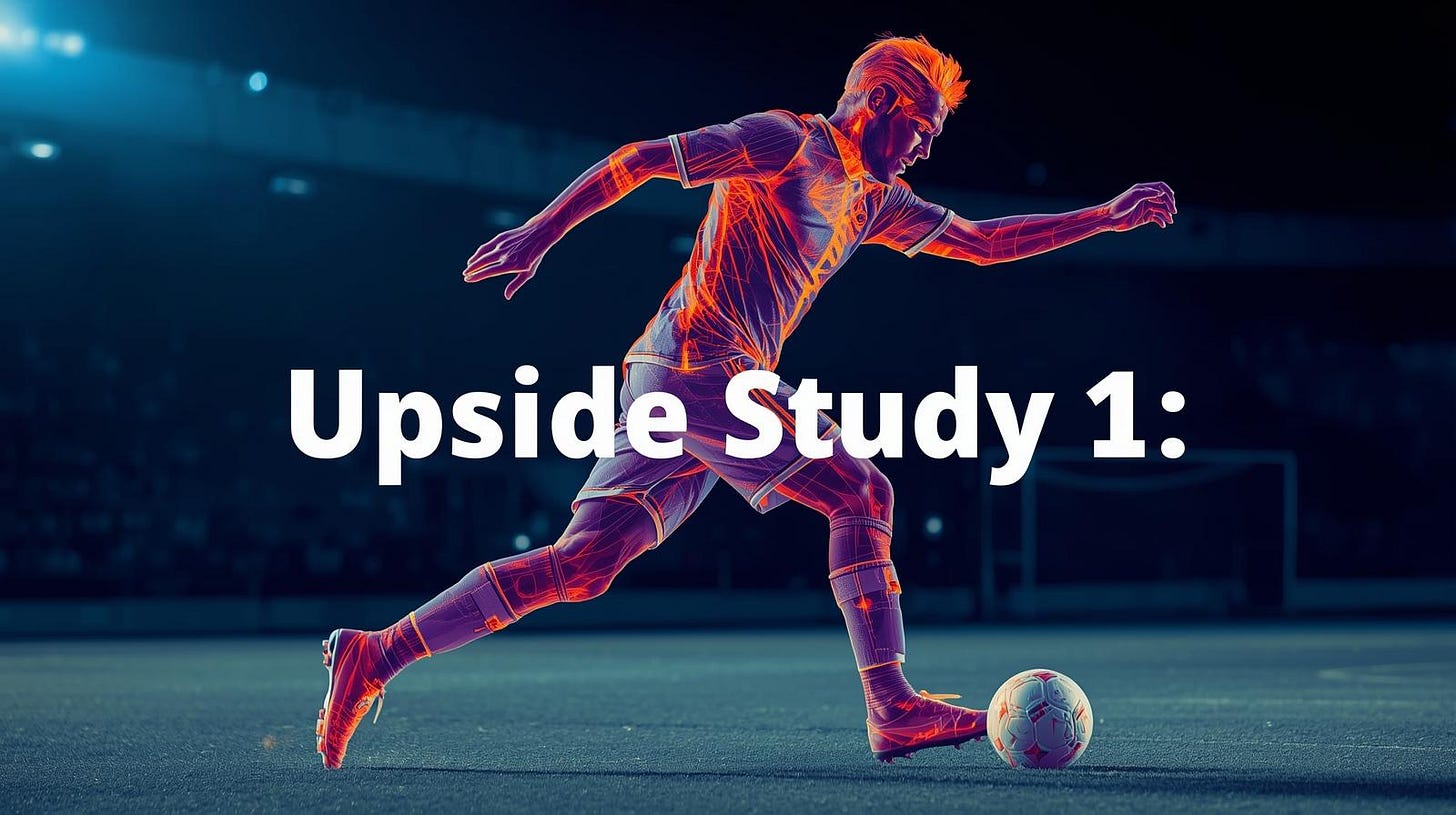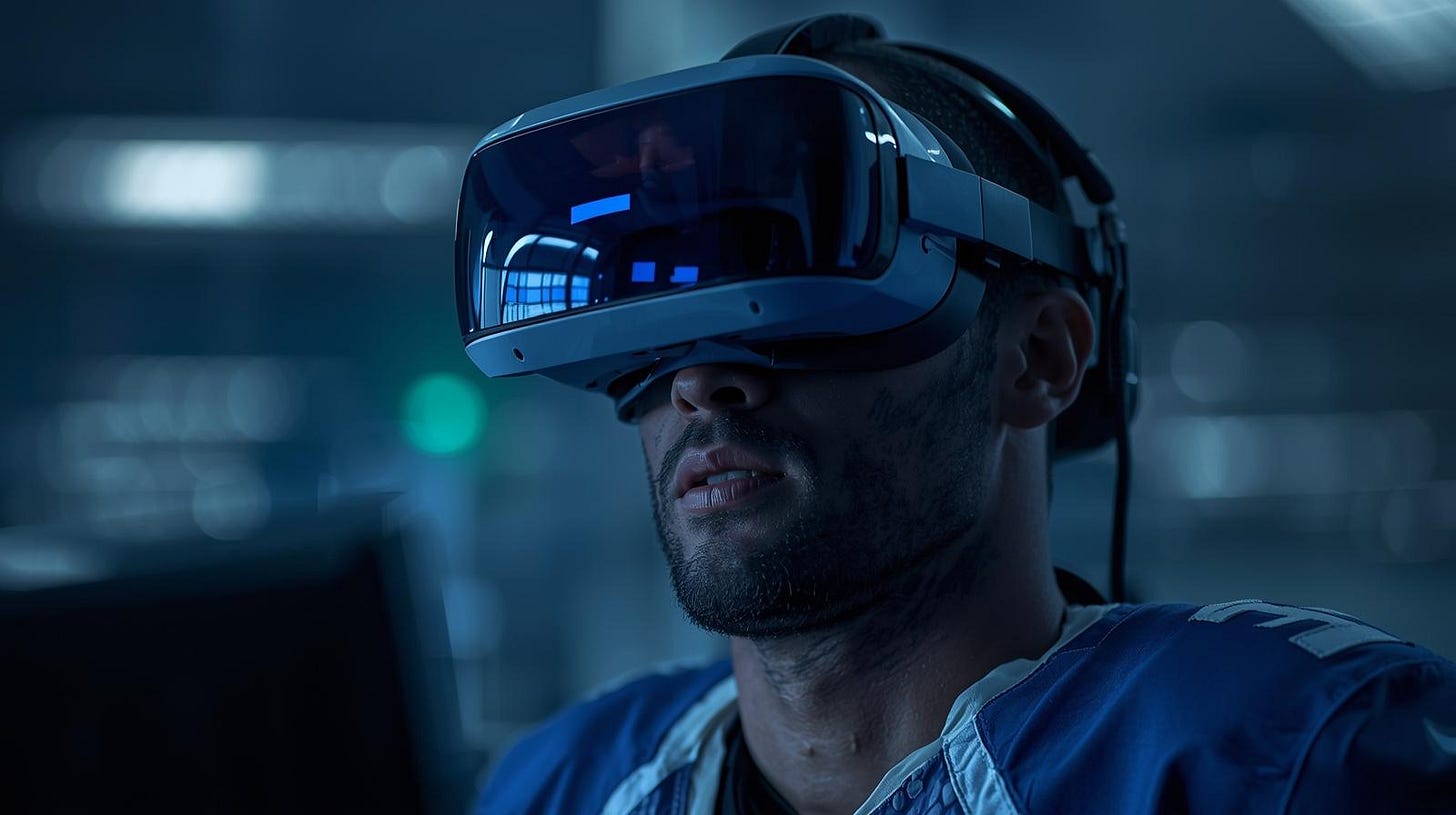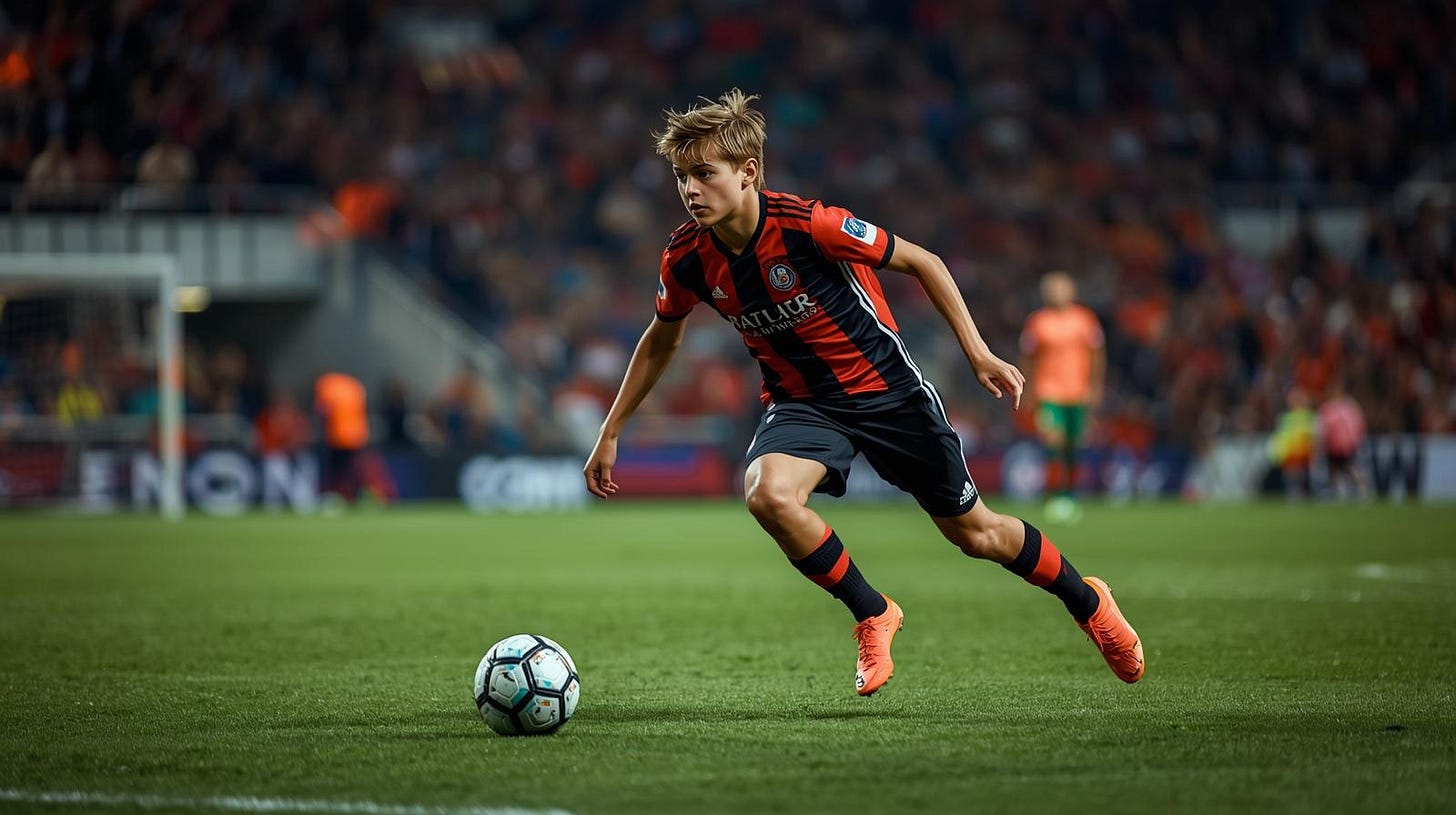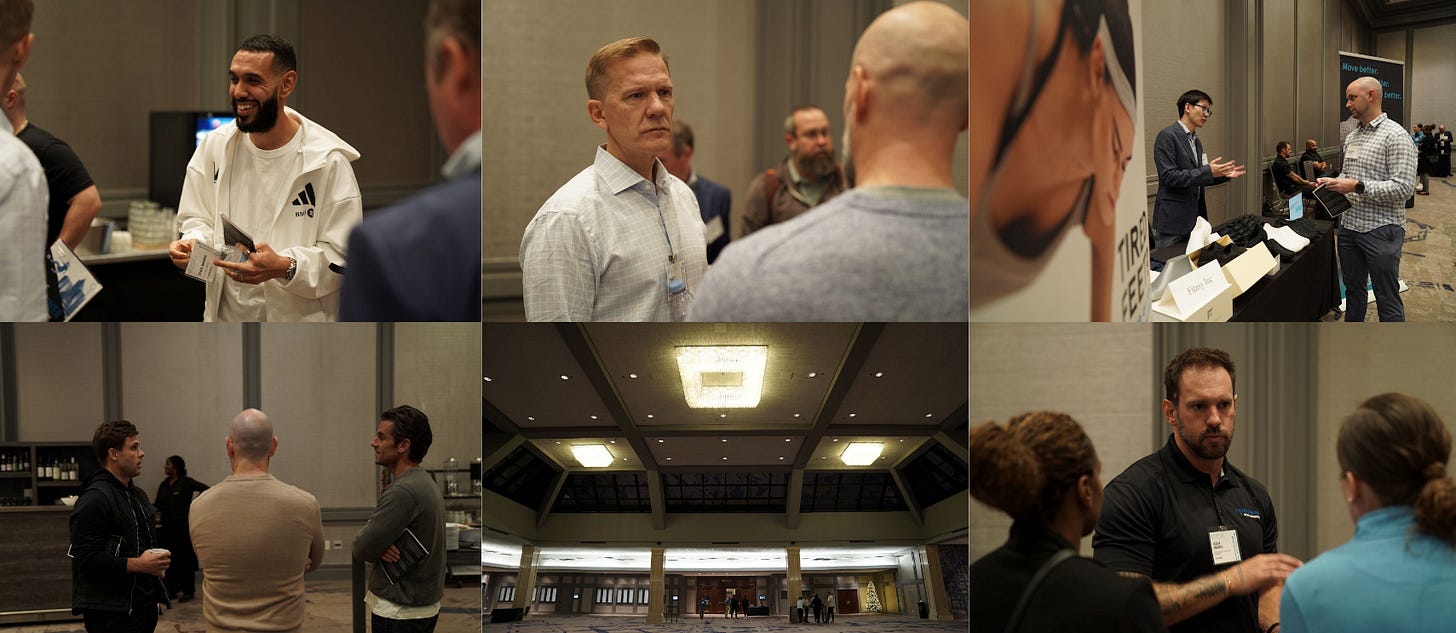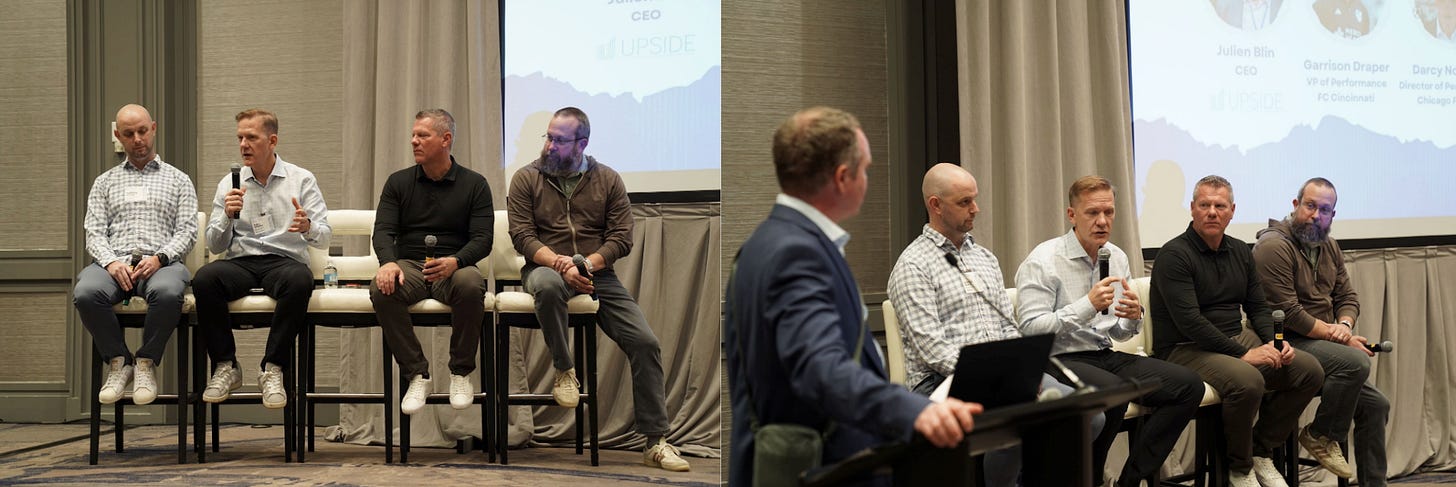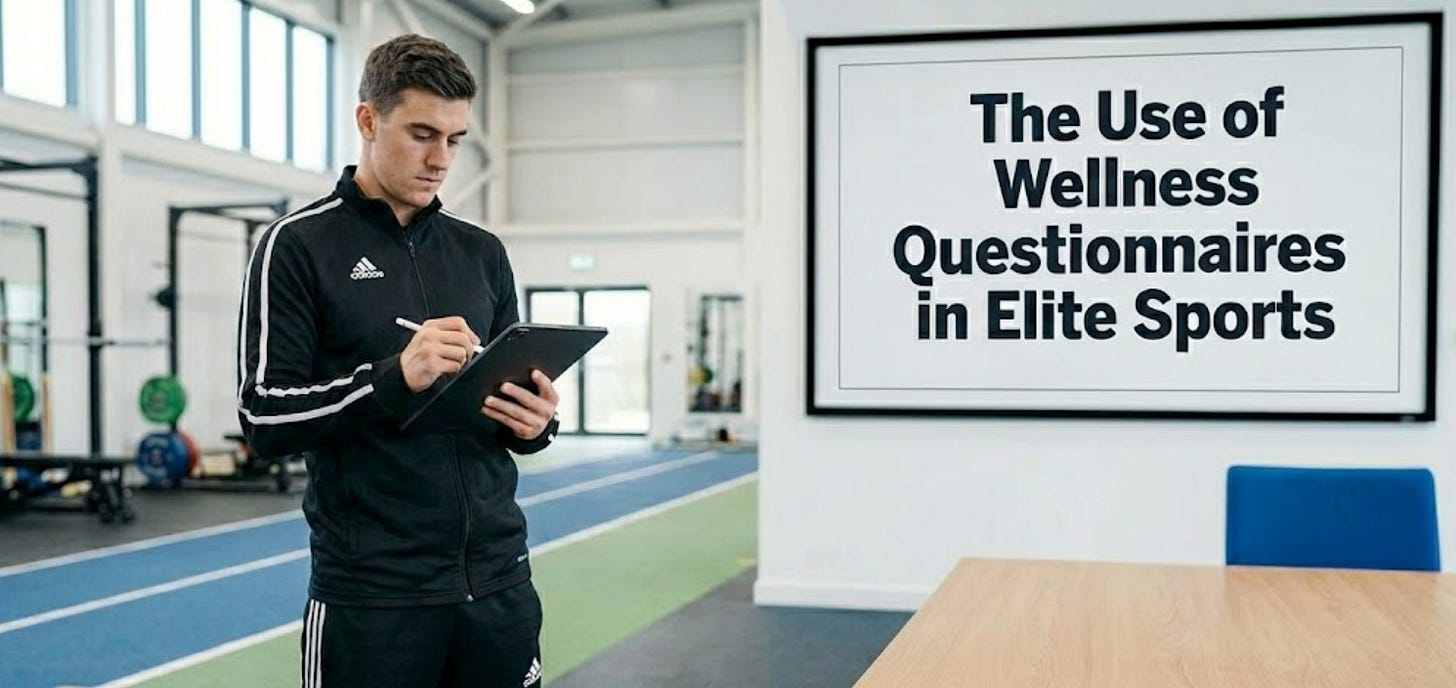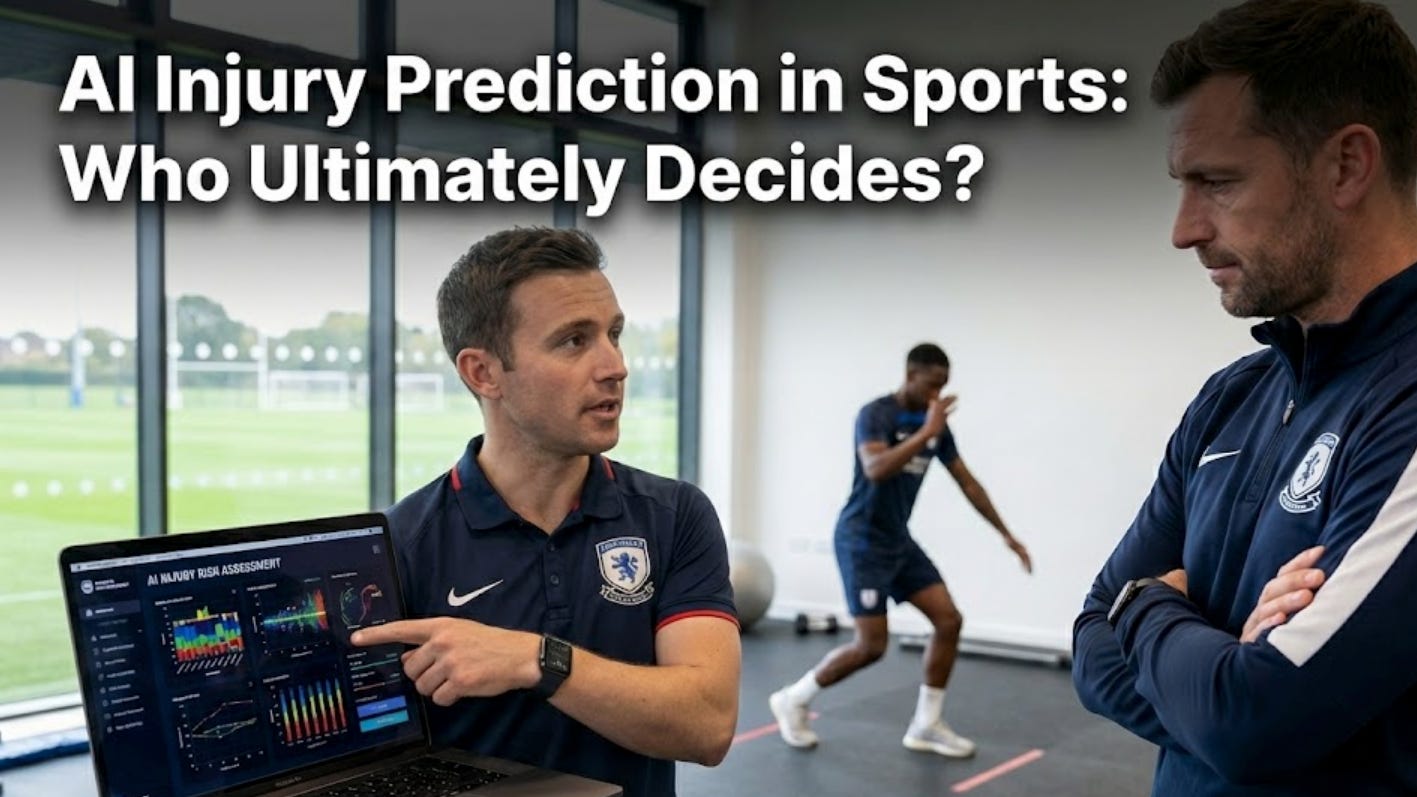⚽ Upside Study (1): Association Between Physical Demands, Skin Temperature, and Well-Being Status in Elite Football Players
🧩 Introduction
Elite football places repeated high-intensity mechanical and metabolic stress on players, increasing the need for precise load monitoring to optimize performance and reduce injury risk. While GPS technology has transformed the monitoring of external load (e.g., distances, accelerations, high-speed running), it provides limited insight into internal load and recovery status.
Wellness questionnaires are commonly used to fill this gap, but they are subjective and prone to bias. Infrared thermography (IRT) has emerged as a promising, non-invasive method to objectively assess internal load by detecting skin temperature asymmetries, which may signal fatigue, muscle overload, or elevated injury risk.
This study investigates how physical demands (GPS metrics), skin temperature asymmetries (via thermography), and self-reported well-being interact across a competitive season in elite football players, aiming to inform more integrated and proactive monitoring strategies.
👥 Authors
Carlos Majano, Jorge Garcia-Unanue, Ismael Fernández-Cuevas, Víctor Escamilla-Galindo, Antonio Alonso-Callejo, Javier Sanchez-Sanchez, Leonor Gallardo, Jose Luis Felipe
Scientific Reports (2023), conducted in collaboration with a professional Spanish football club
You can download the full PDF study by clicking on the button below:
🧪 Study Overview
Design: Observational longitudinal study
Time Frame: 12-week competitive period (2021–2022 season)
Participants:
30 male professional football players (Spanish Second Division)
Players reintegrated post-injury only after full medical clearance
Data Sources & Tools:
Thermography: FLIR T435bx camera, ThermoHuman® software
External Load: WIMU PRO™ GPS (18 Hz)
Internal Load: Weekly well-being questionnaire
Key Measures
Thermal Asymmetry: Bilateral skin temperature differences (cut-off ≥ 0.3 °C) across thighs, adductors, hamstrings, knees, and ankles
Physical Demands: High-speed running (HSR), accelerations, decelerations, sprint counts, HMLD, max velocity
Well-Being: RPE, stress, muscle soreness, rest duration, rest quality
📈 Key Findings
🔥 Physical Demands and Thermal Asymmetry
Over the competitive microcycles, high-intensity accelerations and decelerations decreased, while other high-speed actions remained relatively stable.
Players with higher thermal asymmetries in specific muscle groups showed distinct load profiles:
Thigh asymmetries:
Greater exposure to high-speed running, sprinting, and accelerations.
Hamstrings (posterior thigh):
Players with lower asymmetry completed more high-intensity actions, suggesting asymmetry may limit performance capacity.
🌡️ Thermal Asymmetry and Well-Being
Clear associations emerged between localized thermal asymmetry and subjective well-being:
Adductor asymmetry:
Positively associated with higher stress and muscle soreness, and reduced rest.
Knee asymmetry:
Positively associated with fatigue
Negatively associated with rest quantity and rest quality
Hamstrings:
High asymmetry linked to reduced high-intensity outputs, indicating a possible protective or compensatory response.
🧠 Practical Implications for Teams
This study reinforces that skin temperature asymmetry is not just a medical signal, but a performance and readiness indicator:
IRT can objectively flag internal load and fatigue that may not yet appear in GPS metrics.
Certain asymmetries correspond to worse well-being profiles, even when external loads appear manageable.
Combining GPS + thermography + wellness data provides a more complete picture of player status than any single method alone.
📌 Recommendations
For performance and medical staff:
Integrate regular thermography screening (e.g., MD-4) alongside GPS and wellness questionnaires.
Treat asymmetries ≥ 0.3 °C as early warning signs, not just injury indicators.
Adjust training loads when thermal asymmetry aligns with worsening stress, soreness, or sleep quality.
For sports tech and analytics providers:
Develop integrated dashboards combining external load, thermal data, and subjective well-being.
Use thermal asymmetry trends to support individualized load management and recovery planning.
⚠️ Limitations
Small sample size from a single professional team limits generalizability.
Thermal asymmetry thresholds may vary by sport, environment, or population.
Observational design prevents causal conclusions between asymmetry and injury.
✅ Conclusion
This study demonstrates meaningful links between physical demands, skin temperature asymmetries, and perceived well-being in elite football players. High-intensity actions contribute to localized thermal imbalances, which in turn are associated with increased fatigue, stress, and muscle soreness.
By integrating infrared thermography with GPS and wellness questionnaires, teams can move toward earlier detection of overload, smarter training adjustments, and improved player health and performance sustainability.
🧠 Upside Study (2): Virtual Reality as an Assessment Tool in Neurorehabilitation – A Scoping Review of Current Evidence and Future Directions
🧩 Introduction
Accurate assessment is foundational to effective neurorehabilitation, guiding diagnosis, treatment planning, and progress monitoring for individuals with neurological conditions. Traditional clinical assessments—such as the Box and Block Test (BBT), Action Research Arm Test (ARAT), and Nine-Hole Peg Test (NHPT)—are well validated but limited by manual scoring, ceiling effects, and a lack of detailed kinematic data.
Advances in virtual reality (VR) technology offer an opportunity to modernize assessment by combining standardized task environments with high-resolution movement tracking, immersive feedback, and enhanced patient engagement. While VR has been widely studied as a therapeutic intervention, its role as a formal assessment tool remains underexplored. This scoping review addresses that gap by mapping current evidence on VR-based assessments in neurorehabilitation, identifying validated use cases, technological approaches, and key research limitations.
Authors:
Mohammed M. Alrashidi, Ahmed S. Alanazi, Shahad Alkhannani, Amirah Alharbi, Shahad Almuayrifi, Ayman A. Alhammad, Saad A. Alhammad, Abdulrhman S. Mashabi
BMC Sports Science, Medicine and Rehabilitation (2025)
You can download the full PDF study by clicking on the button below:
🧪 Study Overview
Design: Scoping review conducted according to PRISMA-ScR guidelines
Protocol registration: PROSPERO (CRD420251113260)
Search period: Database inception – July 2025
Data Sources:
PubMed, MEDLINE, Scopus, Web of Science, CENTRAL, IEEE Xplore, and grey literature sources.
Included Studies:
16 studies
836 total participants
Published primarily within the last 10 years
Neurological Populations Studied:
Stroke
Multiple sclerosis (MS)
Parkinson’s disease (PD)
Cerebral palsy (CP)
Spinal cord injury (SCI)
Movement disorders (e.g., dystonia)
Unilateral spatial neglect
Athletes at risk for concussion
Key Assessment Focus:
Validity
Reliability
Usability
Feasibility
Technology Types:
Immersive VR (head-mounted displays)
Mixed reality
Optical hand-tracking
Controller-based VR
Custom haptic and motion-tracking systems
📈 Key Findings and Results
✅ Strong Evidence for Validity and Feasibility
Most VR-based assessments were virtual adaptations of established clinical tests (e.g., BBT, ARAT, VPIT).
Convergent validity with traditional assessments ranged from moderate to excellent (r = 0.65–0.99).
Optical hand-tracking and mixed-reality systems consistently showed stronger correlations (r > 0.90) than controller-based systems.
🎯 Richer, More Sensitive Performance Data
VR assessments captured detailed kinematic metrics (movement smoothness, trajectory, speed, variability) not available in standard clinical tests.
Some studies detected subtle motor deficits even when traditional tests showed no impairment (e.g., concussion and spatial neglect studies).
🧑⚕️ Usability Was Generally High—but Variable
System Usability Scale (SUS) scores frequently exceeded 80, indicating strong acceptance by patients and clinicians.
However, usability varied by condition and modality:
Some MS and pediatric cohorts rated physical tasks as more intuitive than VR.
Controller-based VR was often perceived as more difficult than hand-tracking.
🚫 No Strong Evidence Yet For:
Widespread clinical implementation without further validation.
Standardized normative reference values across age, sex, or impairment severity.
Longitudinal sensitivity to change or prediction of rehabilitation outcomes.
Cost-effectiveness relative to traditional assessment tools.
📉 Key Gaps Identified
Lack of normative datasets, limiting clinical interpretability.
High heterogeneity in hardware, software, and outcome metrics.
Predominance of small pilot and feasibility studies.
Minimal longitudinal or multicenter validation.
Limited integration into clinical workflows and electronic health records.
🧠 Implications for Clinicians, Teams, and Health Systems
This review highlights a clear opportunity—and a caution.
VR-based assessments show strong promise as adjunct tools that can enhance traditional neurorehabilitation assessments through richer data capture, improved engagement, and greater ecological validity. However, premature adoption without standardization risks fragmentation and inconsistent interpretation.
Key implications:
VR can augment, but not yet replace, conventional assessments.
Hand-tracking and mixed-reality approaches appear better suited for clinical assessment than controller-based systems.
Training and workflow integration will be critical for adoption.
📌 Recommendations
For clinicians and rehabilitation programs:
Use VR assessments selectively, especially when detailed kinematic insight is valuable.
Prefer systems with demonstrated convergent validity and high usability.
Be cautious when interpreting VR-only metrics without normative references.
For researchers and technology vendors:
Prioritize standardization of protocols, reporting, and outcome measures.
Develop large-scale normative datasets stratified by age and condition.
Conduct longitudinal studies to assess responsiveness and clinical relevance.
Explore integration with telerehabilitation and electronic health records.
⚠️ Limitations
Scoping review methodology does not include formal risk-of-bias assessment.
Substantial heterogeneity prevented quantitative synthesis or meta-analysis.
English-language restriction may have excluded relevant studies.
Adverse effects (e.g., cybersickness) were inconsistently reported.
✅ Conclusion
VR-based assessment in neurorehabilitation is an emerging but promising field. Current evidence supports good validity, feasibility, and usability, particularly when VR is used to extend established clinical tests. However, widespread clinical adoption will require greater standardization, normative data, and longitudinal validation. With targeted research and thoughtful implementation, VR has the potential to meaningfully enhance how neurological function is assessed in both clinical and remote settings.
⚽ Upside Study: Reasons Why Selected Young Female and Male Football Players Drop Out on Their Path to the Elite Senior Level
🧩 Introduction
Only a small percentage of talented youth football players successfully transition to the elite senior level, despite years spent in professional academies and national development pathways. While talent identification systems are designed to maximize long-term success, dropout rates remain high—raising important questions about why promising players disengage before reaching the professional level.
Previous research has often examined dropout in youth sport broadly, focusing on motivation, burnout, or injury. However, few studies have specifically explored dropout among highly selected, elite-track youth football players, or compared reasons for dropout between female and male players navigating similar development systems. This study addresses that gap by examining why talented youth footballers leave the elite pathway and how sport-related, psychological, social, and structural factors contribute to attrition.
You can download the full PDF study by clicking on the button below:
🧪 Study Overview
Design: Mixed-methods study combining retrospective surveys and structured interviews
Participants:
Former elite-track youth football players
Both female and male athletes who were previously selected for high-level development programs but did not reach elite senior football
Age at Dropout:
Primarily late adolescence to early adulthood—during the transition from youth to senior football.
Key Domains Examined:
Sport-related factors
Psychological and motivational factors
Social and educational pressures
Organizational and structural characteristics of elite football pathways
📈 Key Findings and Results
🚨 Primary Reasons for Dropout
⚽ Sport-Related Factors (Most Frequently Reported)
Perceived lack of future opportunities at the elite senior level.
Deselection or reduced playing time, often interpreted as a signal of limited long-term potential.
Injuries, particularly recurrent or long-term injuries that disrupted development.
Increasing performance demands and pressure during late adolescence.
🧠 Psychological and Motivational Factors
Decreased enjoyment and motivation, especially as football became more outcome-driven.
Mental fatigue and burnout, linked to prolonged exposure to high expectations.
Reduced sense of autonomy and control over personal development.
🎓 Dual Career and Life Balance Challenges
Conflicts between football and education or employment demands.
Difficulty maintaining a sustainable dual career pathway.
Concerns about long-term career security outside of football.
👩🦰 Sex-Based Differences Identified
Female Players:
More frequently cited limited professional opportunities, financial instability, and unclear career pathways.
Structural barriers such as fewer professional contracts and weaker league infrastructure.
Greater emphasis on balancing football with education and future employment.
Male Players:
More commonly reported performance-based deselection, competition depth, and injury-related setbacks.
Higher perceived pressure to “make it” within a narrow time window.
🧪 Factors Less Frequently Associated with Dropout
Lack of talent or technical ability was rarely cited.
Most players believed they had the skill level required but faced systemic or contextual barriers.
Coaching quality was generally viewed positively, though communication around selection decisions was often criticized.
📉 The Transition Phase Is the Critical Dropout Point
The highest risk of dropout occurred during the transition from youth to senior football, when:
Support systems decreased.
Selection pressure intensified.
Contract uncertainty increased.
Feedback became less frequent or less transparent.
🧠 Implications for Clubs, Federations, and Development Pathways
This study highlights that dropout among elite youth players is not primarily a failure of talent, but rather a failure of system alignment, communication, and long-term support.
Key implications:
Deselection processes strongly shape athletes’ self-belief and motivation.
Limited professional opportunities—especially in the women’s game—accelerate attrition.
Dual-career support is critical to sustaining engagement during high-risk transition phases.
📌 Recommendations
For clubs and academies:
Improve transparency and communication around selection and deselection decisions.
Extend support beyond youth teams, especially during the youth-to-senior transition.
Normalize non-linear development pathways and late maturation.
For federations and governing bodies:
Expand professional opportunities and financial security in the women’s game.
Strengthen dual-career frameworks integrating education and sport.
Invest in holistic athlete development models addressing mental health and motivation.
For practitioners and performance staff:
Monitor psychological load alongside physical and performance metrics.
Proactively address burnout, identity foreclosure, and motivation loss.
Provide clear development feedback independent of selection outcomes.
⚠️ Limitations
Retrospective design may introduce recall bias.
Sample limited to players already deselected or dropped out.
Cultural and structural context may limit generalizability to other countries or development systems.
Self-reported data cannot fully capture organizational decision-making processes.
✅ Conclusion
Elite youth football dropout is driven less by lack of ability and more by structural constraints, psychological pressure, and unclear future opportunities. The transition from youth to senior football represents the most vulnerable stage in the pathway—particularly for female players facing limited professional prospects. To reduce attrition and protect long-term athlete development, football systems must evolve beyond early selection and performance filtering toward more transparent, flexible, and supportive pathways.
You may also like:

